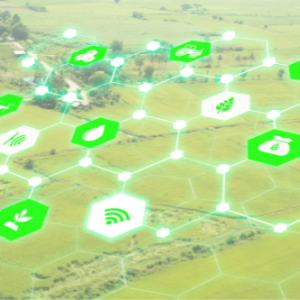Attend any given telco conference and still, after several years now, you’ll hear the same buzzwords: IoT and digital transformation. These are likely to be mixed in with other flavours of the moment like AI, CISS, cloud, and smart homes. However, the industry’s love affair with this jargon isn’t unfounded. The sector is under pressure from stagnating revenue from traditional sources; thus, they need to streamline and diversify.
Certainly, cutting costs and optimising operations is critical, which is why digital transformation continues to play such an important role. That said, cost-cutting can only take you so far. In contrast, investing in new technology creates new revenue opportunities, with IoT offering just that. From CISS in ‘smart factories’ to optimised traffic flow in ‘smart cities’, IoT has the potential to open up lucrative new verticals in telecoms.
However, before embarking on this project, telco businesses need to address two key things: finding the right partners and providing the right service. Despite preaching about customer-centricity for more than a decade, the industry is still notorious for poor service. Therefore, if telco wants to enter new markets, service levels are critical. With increasingly complex ecosystems and tailor-made, non-standard products, companies need to ensure they’re providing the service high-level, corporate clients expect. We’ll explore these opportunities and challenges below.
Table of Contents
Missteps from the past
For more than 25 years now, traditional telco providers have tried to diversify with limited success. This began with massive investment in the 3G spectrum prompted by the value presented by content and entertainment platforms. In most cases these massive investments were disastrous, and today, content is delivered globally by players like Netflix and Spotify on the entertainment front and Amazon or Ali Baba in trading and cloud services. Meanwhile, telco is left with delivering the connectivity with ever-increasing pressure on margins for the ‘commodity’ of Internet access.
So where does this leave telco today? Should the sector stick to what they’re good at and focus on connectivity as opposed to end-user services? The answer is, in fact, no: the key is not to shy away from taking a bigger part of the value chain, but to avoid history repeating itself. The growth potential in IoT services like CISS, smart cities or smart homes is enormous; in a few years, almost any new device (TVs, watches, cars, freight containers, surveillance cameras, parking sensors, electricity meters, you name it) will be connected via IoT.
According to GSMA, the number of IoT connections has already surpassed the number of traditional mobile customers. By 2025, we will have reached more than 25 billion connections. The growth rates until then are expected to be 16% annually compared to only 2.2% annual growth for traditional mobile subscribers. These statistics are certainly compelling, and now, telco has an unprecedented opportunity to get a slice of the action – providing they learn from the past.
Learning from mistakes and seizing new opportunities
Telco is in a strong position when it comes to breaking into new IoT markets, as they have something their partners want: spectrum. While almost anything else can be swapped with other vendors, spectrum is scarce – which puts telco in a strong position to find partners. Although it’s true rival telco companies will compete for spectrum, those that act sooner rather than later will gain the edge in IoT verticals.
It’s clear that IoT presents substantial opportunities and telco is in a good position to exploit them. However, companies can’t succeed on these foundations alone, especially when telco’s previous failures are undoubtedly related to customer service. To avoid reliving the events of the last two decades, telco needs to up their customer service game.
Customers want simplicity; they want a one-stop-shop for their connectivity needs. They want something easy to use, something that just works, whether they’re a consumer buying a mobile phone or a large corporate investing in a CISS factory system. To succeed, telco needs to get as close to the end-user as possible.
The challenge of complexity in smart cities, CISS or smart homes
Naturally, this is easier said than done. Complex solutions attract a more discerning consumer who is trickier to get close to and serve. It’s simple to get a consumer to buy a mobile phone from a shop then switch their SIM card. In contrast, persuading a factory to shut down its entire operation to install a new CISS system is more tricky. Moreover, IoT products like CISS are complicated and generally tailor-made by multiple providers/vendors. This creates a situation which is, for all intents and purposes, the enemy of good service: disparate vendors all positioned far from the end-user.
An example is a smart city solution which might include multiple use-cases from traffic monitoring, waste management, parking solutions, and so forth. Let’s take a simple smart parking solution: who are the customers and who’s going to pay? The person looking for a parking spot or the municipality? What payment solution is going to be used? Should the solution include barriers to reserve and navigation to find the parking spot? If you do need GPS services, then you need to include map providers; therefore, should the app be a mobile app or in Apple Car? The list of questions goes on and this is just for this basic service.
As the above example demonstrates, the supply chain is potentially extremely extensive, starting from the hardware/devices, wireless modules, telco-services, IoT platforms and software and applications developers – all of which have to work together. Only in a limited number of cases are these the same or even standardised across the individual use-cases. Therefore, getting close to the end-user is a significant challenge – creating a situation where the mistakes of the past might be repeated.
Smart homes, cities and CISS solutions going forward
However, the initial point remains; telco is in a strong position to attract partners and consolidate projects because of their control of spectrum. By choosing the right partners, telco can present a united front to customers that desire simplicity. After all, IoT is a complex new frontier and telco companies are unlikely to have the resources or expertise in-house. To properly execute IoT services, you need a different mindset that can’t be built within the existing organisation.
Ultimately, creating these partnerships avoids the risks associated with significant time and resource investments. By establishing external partnerships – whether it be with freelance experts or small tech companies – large telco providers can attract promising talent and even avoid startups becoming competitors further down the line. At the end of the day, getting the right people at the right time is key; experts that develop the product are unlikely to be the ones to run it afterwards. This means getting strategic experts as and when integrating the principles of digital transformation into product development.
From here, they can leverage the massive potential of delivering complex IoT systems like CISS, smart homes and smart cities. By bringing together the right partners, telco can galvanise players to create coherent, simple products – which is what consumers of every scale demand. The key imperative is to act now so the sector can secure its position in the value chain.




![[Updated] How to level up telecom sustainability](https://blog.outvise.com/wp-content/uploads/2024/01/telecom-sustainability-1-300x300.png)
No comments yet
There are no comments on this post yet.